Part 3 in this ongoing series on Phase Changes in which we explore the idea that marketing is the art and science of removing or introducing friction into the marketplace
and wherby the measure of success is one of Brand Friction (ie Sticky) and/or Brand Frictionless (ie Compelling)
Parts 1, 2, 4 & 5 can be found here, here and here and here
Should we be surprised to discover the Phase Changes correlates with the old 'Boston Box' (Growth Share Matrix) classification model?
Not really

But the insight that it brings is the 'Boston Box' is better understood as a clock than a classification system
and we can express this idea by mapping the timeline of the YoY change in iPhone unit sales as a series of phase changes through the Boston Box
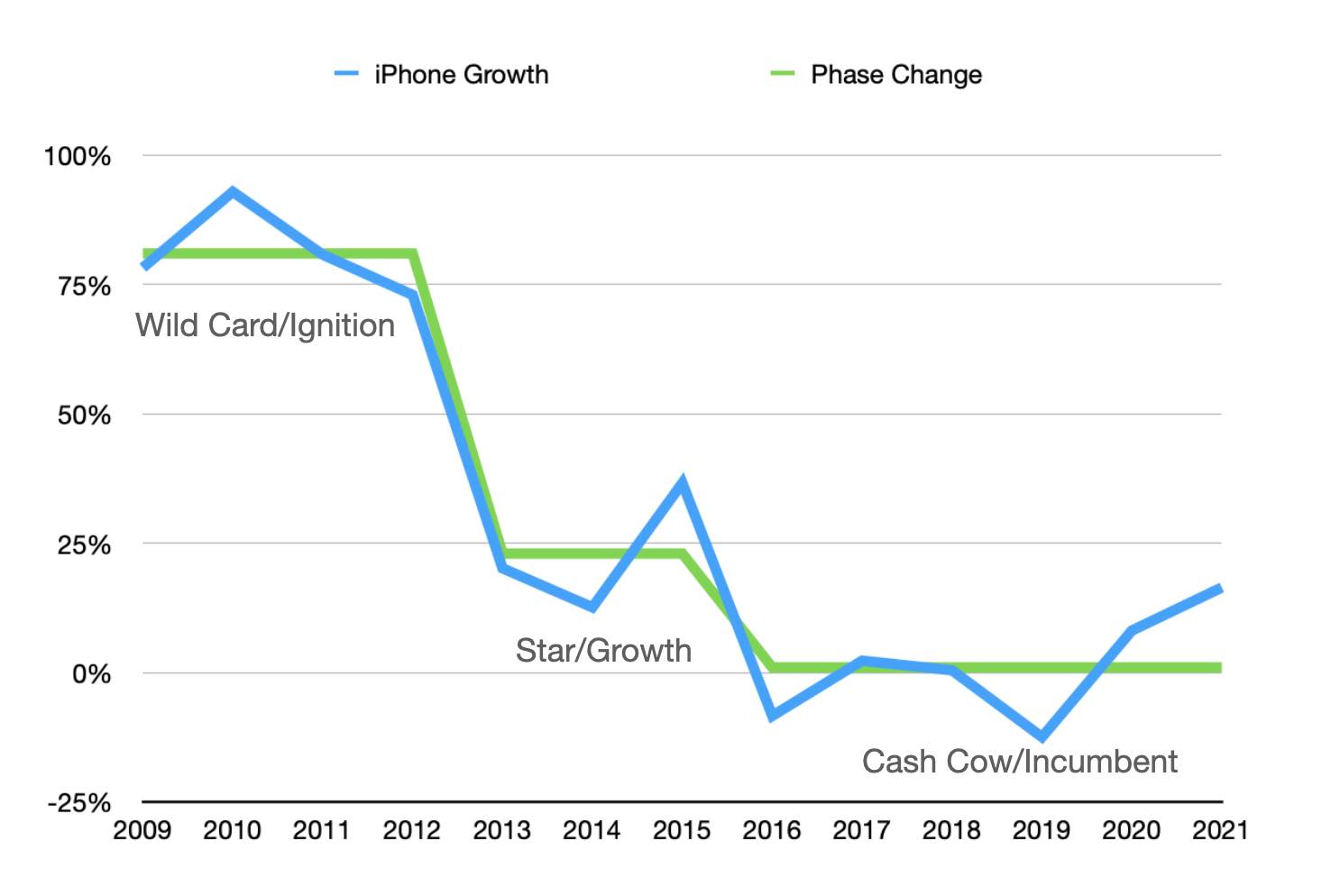
Understand this and you can see the 'Boston Box' is better understood as portfolio management tool for managing the product lifecycle through the phase changes from Wild card > Star > Cash Cow > Dog (Decline)
What is interesting is when you expand on this idea to map Apple's portfolio of wearable technologies
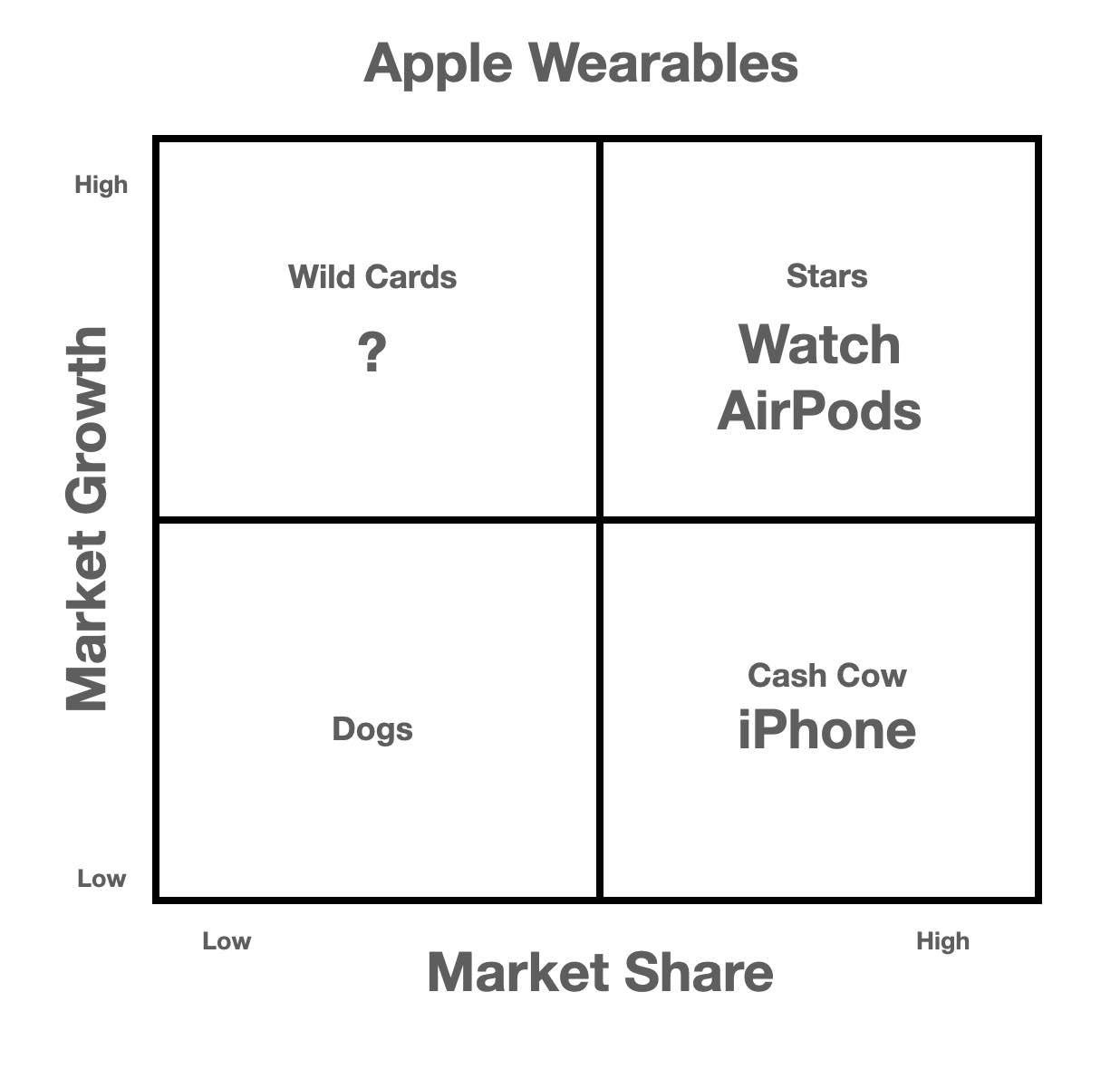
and then map the portfolio across the decades
We discover that the iPhone was part of a continuum of a portfolio winding through the phase changes from Wild Card to Star to Cash Cow
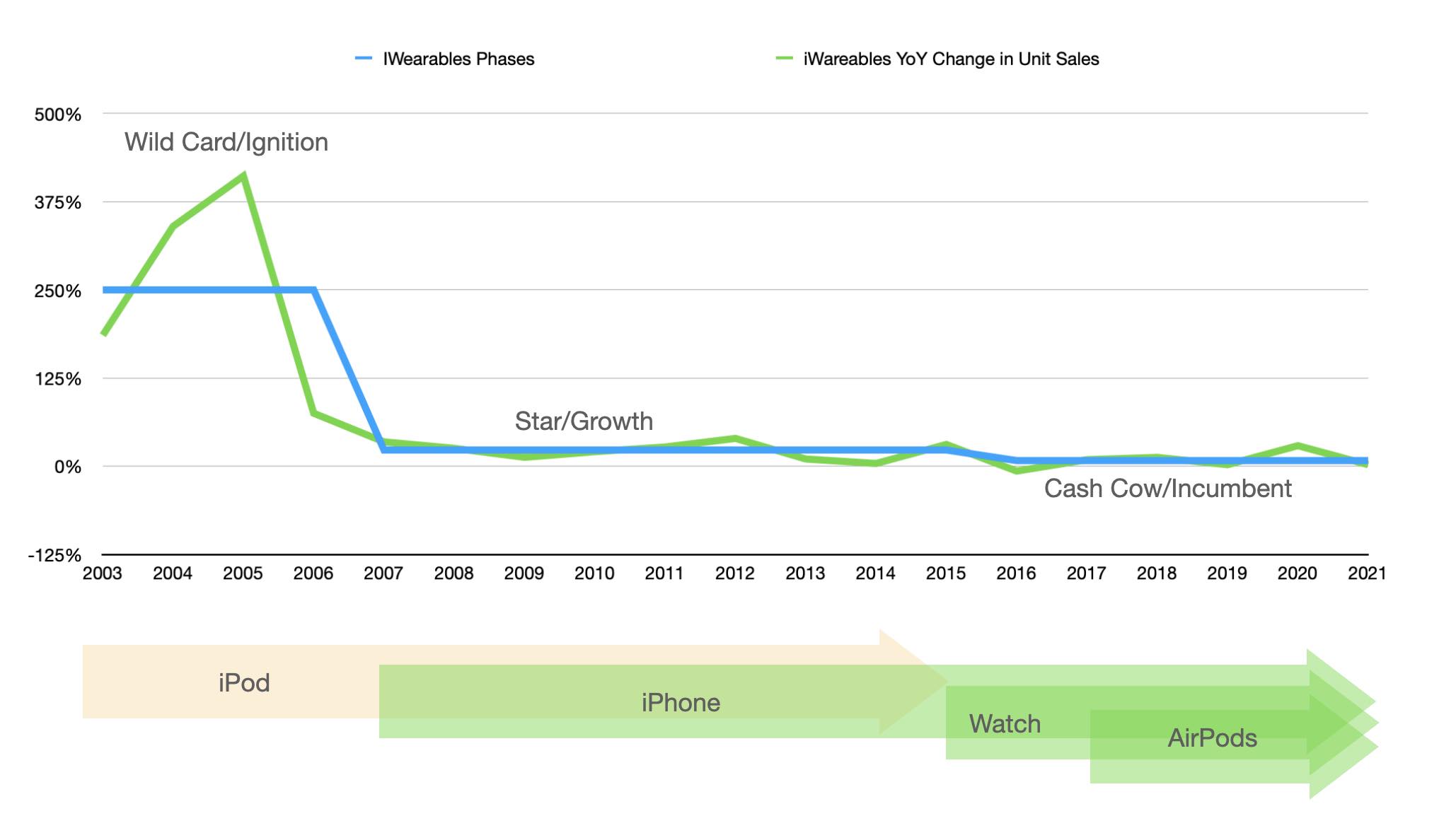
We discover that Apple is in the business of building sub-categories within the wearable digital tech category it launched when it disrupted the Sony Walkman with the iPod
Moreover the introduction of these new products has not changed the overall trajectory of the portfolio - but they have reinforced the relative position of the Apple brand in the market category as it moved from Wild Card/Disruptor to Cash Cow/Incumbent
We can see how each new product entry built on the user base of the existing technology and how - with the exception of the watch (a line extension too far for wearable media delivery?) this accelerated adoption of the next wave of wearable technology
Note: The iPod sold roughly as many units as the Walkman during its lifespan however the adoption rate was 2x faster (iPhone 4x faster) than the Walkman launched in 1979
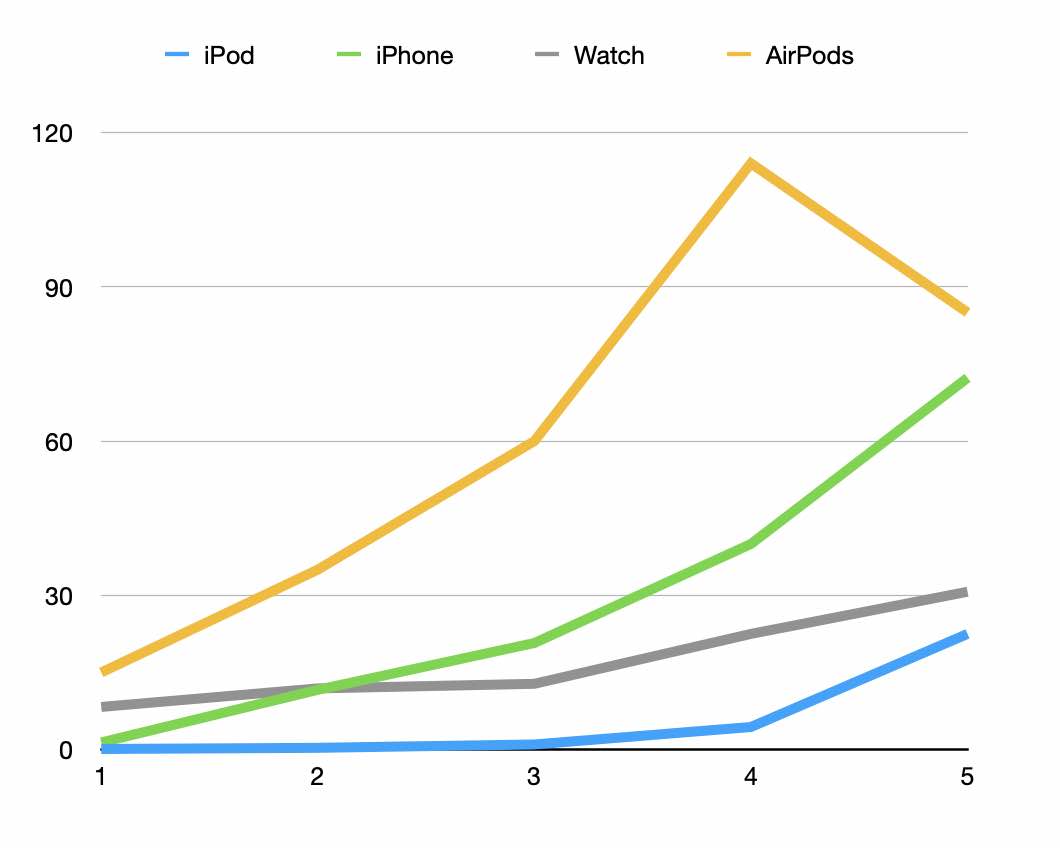
But more on that idea another day...
The key observation that needs to be made is the core of the model... and arguably the core of the marketing profession... resides in the evaluation of the 'Wild Card' quadrant
i.e. Evaluating the odds and knowing where to place the bets
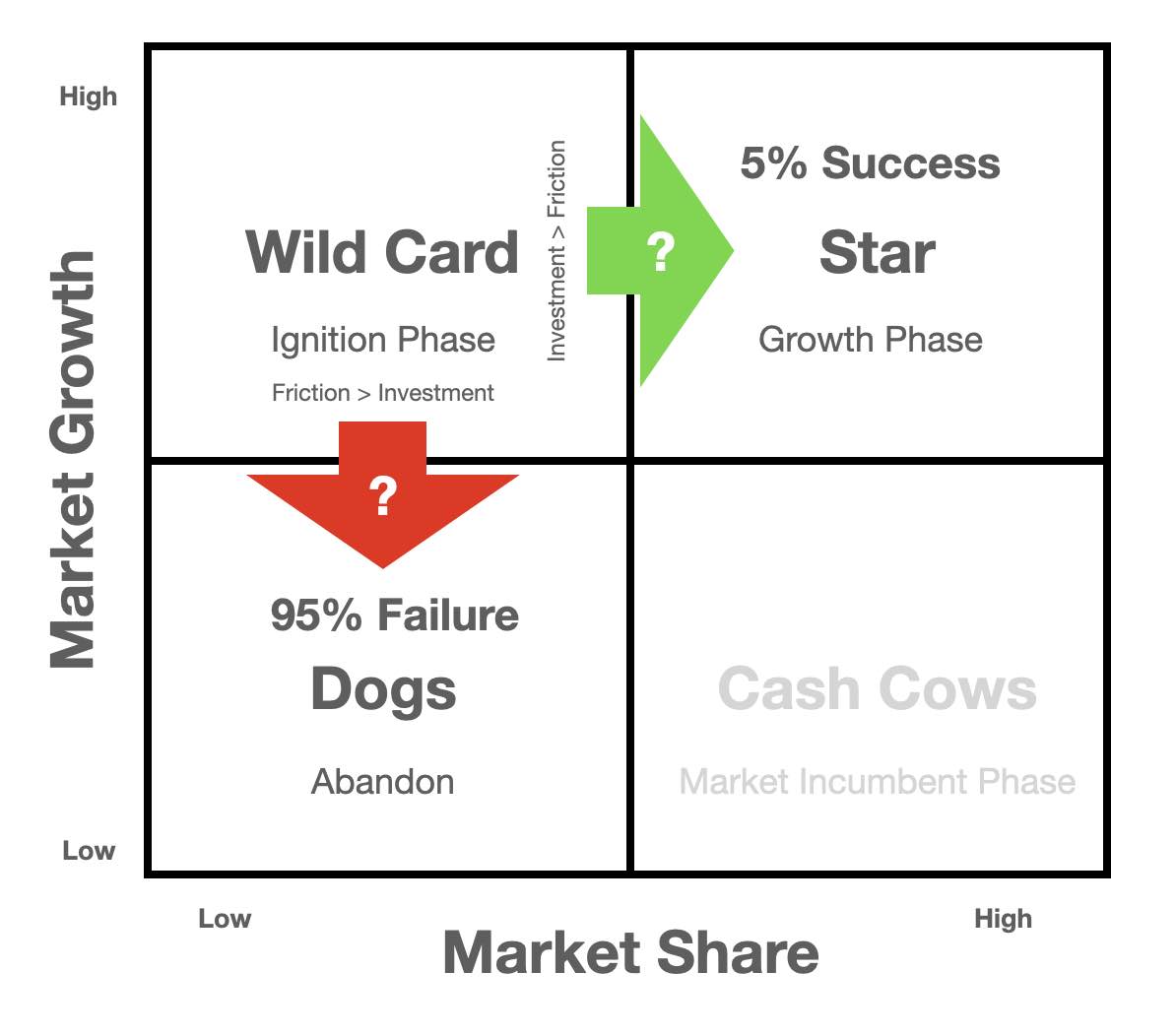
Because, if we map the probability of success into this model, based on Venture Capital ROI in early stage startups, we discover 95% of those investments in the 'Wild Cards' fail to grow fast enough to become 'Stars'
The rest just slip away into oblivion
So how do you forecast success?
Good question!
A better question is how do we improve our chances of success?
and the answer to that is you begin by asking better questions
and then testing the answers to discover if they are indeed the right questions
Let's begin with a simple one: What game are you in? Volume or Margin or Both?
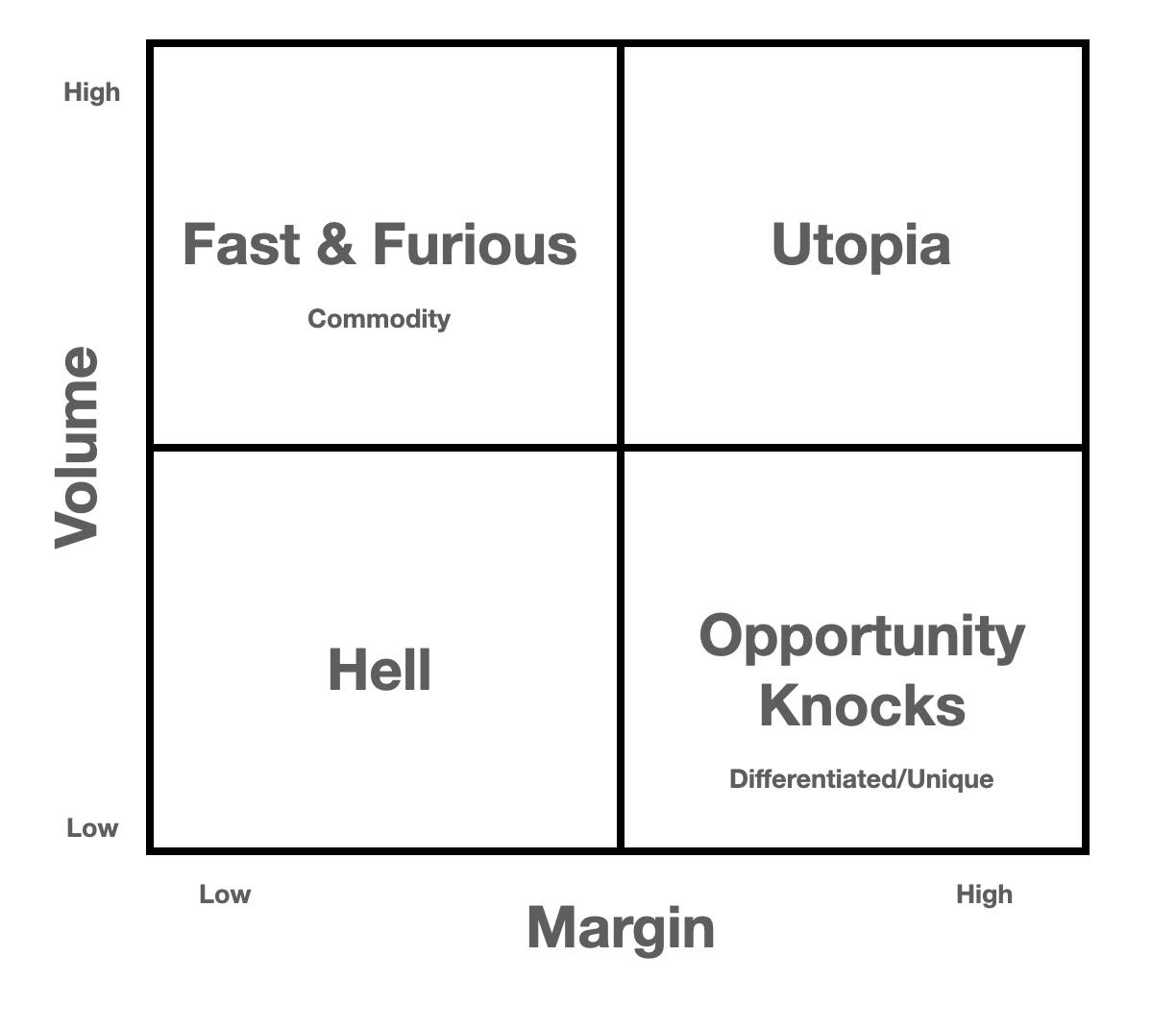
Define this and you'll quickly identify who the competition is...
Better still you can translate Volume into Logic (Price) and Margin into Emotion (Sins of the heart) and from there you profile your ideal buyer (Target Market)
and once you have an ideal buyer you can begin the task of weaving a social proof (Narrative) from their collective aspirations and dreams
The objective being to pivot the 'Principle of Least Interest' (ie ‘The idea in sociology that the person or group that has the least amount of interest in continuing a relationship has the most power over it’) in your favour
The reason being the 'Principle of Least Interest' is at the heart of the Friction - this market resistance - you are attempting to remove from the growth equation
and you do this by ultumately changing the question inside the buyer's head from 'Why should I buy?' to 'Why shouldn't I be buying?'
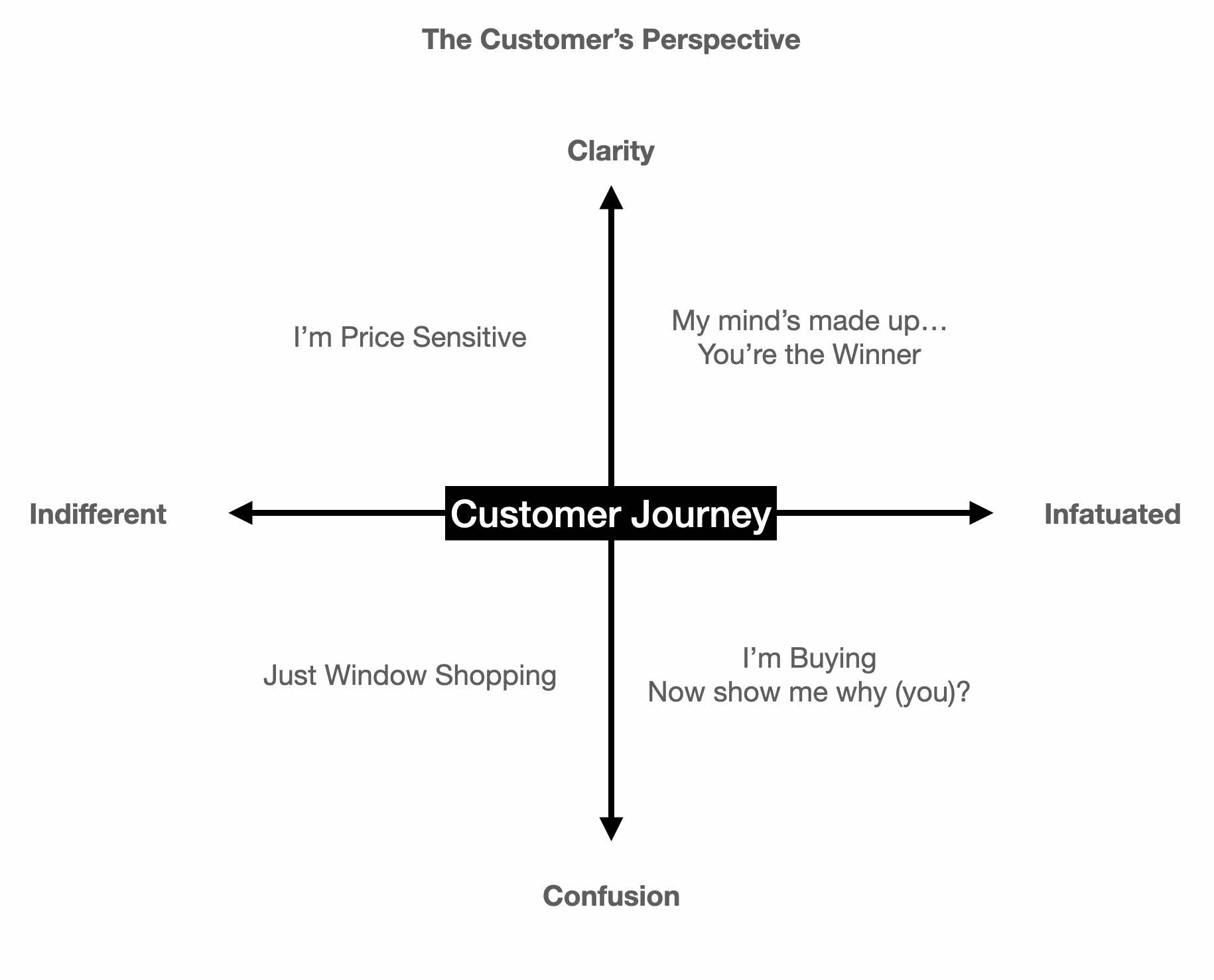
and now I'm going to finish this brief post off with a quantum leap
Google search and digital in general are about outsourced memory
This is the key difference between Ads of the MadMen era and the digital era
In the earlier era branding was owning a space in people’s heads (Ries/Trout)
They called this 'Positioning'
Today it’s about leasing space in their virtual memory
These are very different challenges with very different rewards on your investment
More so given the challenge can be easily gamified by bad actors active across key pinch points in the value chain
This idea of outsourced virtual memory is also the key driver I suspect behind Zuckerberg’s vision for the metaverse
In this context it is a logical extension of the world Meta and Google already operate in
Meta is chasing the the next generation hardware/vOS platform to disrupt the Google/Apple smart device duopoly
Google is revisiting it’s formative years by scraping the web to feed and train its ground breaking AI
Apple is… ? Advertising is…?
The key observation I want to make is this
If the key to the golden era of mass media was creating unique positions (ie categories) inside the buyer's head
Then the key to unlocking the digital era is creating unique questions inside the buyer's head
Why? Because in a world of infinite virtual memory positioning is just noise
It is the question that becomes the signal
Why? because it renders 99.99999% of the space occupied in the virtual memory redundant
The question is the signal in all the noise
Part 4 on "managing the phases' can be found here
Further reading
Tribal narratives in the age of fractals
The Journey from Metcalfe's Law to The Fractal Narrative